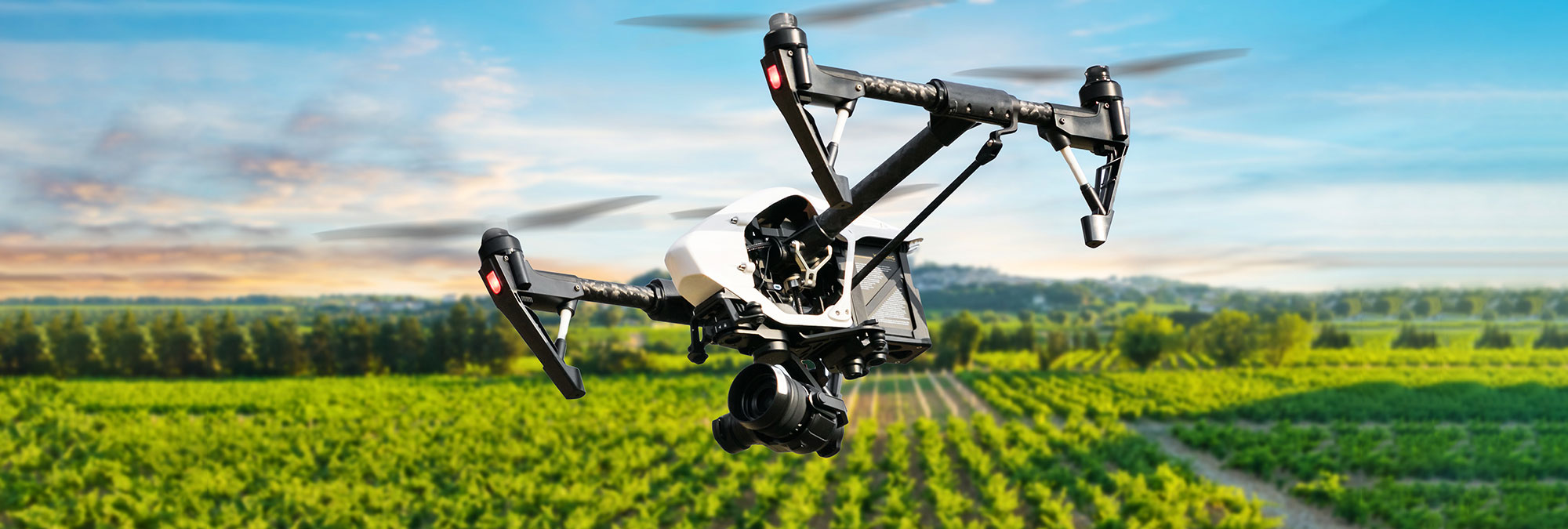In the sprawling landscapes of Australia, where the terrain can be as rugged as it is beautiful, farming is not just a livelihood but a demanding way of life that continuously calls for innovation and resilience. As global technology advances, Australian farmers are increasingly turning to sophisticated tools to enhance their agricultural practices.
Among these innovations, agricultural drones have soared in popularity, offering a novel perspective on crop management—quite literally from above. This technology marries efficiency with precision, fostering a new era of data-driven farming that is set to revolutionise the industry.
1. The Rise of Agricultural Drones
The advent of drones in agriculture represents a pivotal shift in how farmers oversee vast tracts of land. These unmanned aerial vehicles (UAVs) are not merely gadgets but sophisticated tools equipped with advanced sensors and imaging capabilities.
With the ability to survey large areas swiftly, drones deliver a bird’s eye view that is invaluable. This aerial advantage facilitates a more meticulous approach to agriculture, enhancing everything from planting and spraying to harvesting.
2. Benefits of Drone Technology in Crop Monitoring
The capabilities of drones extend far beyond basic surveillance. These machines can be equipped with various sensors to capture data that reveals much about crop health and soil conditions.
For instance, drones can identify areas that require more irrigation, detect fungal or pest infestations, and even pinpoint nutrient deficiencies. This level of detailed observation allows for targeted interventions, conserving resources such as water, fertilisers, and pesticides, and ultimately increasing the yield and quality of crops.
3. Types of Drones Used in Agriculture
The choice between fixed-wing and multi-rotor drones depends on specific agricultural needs. Fixed-wing drones, resembling a traditional aeroplane, can cover more ground quickly, making them ideal for monitoring large, open fields.
They are perfect for broad-spectrum analysis and can operate for longer durations. Multi-rotor drones, however, offer greater precision and stability, which is crucial for detailed imaging and targeted applications like spot-spraying pesticides or performing close inspections of crop health.
4. Drone Imaging Technologies
Modern drones are equipped with a range of imaging technologies that provide a comprehensive overview of crop health through various spectra. Multispectral imaging captures data from several specific wavelengths of light, offering insights into the plant’s health and stress levels.
Thermal imaging can assess water stress levels across a field by detecting the temperature of the crops. Hyperspectral imaging offers even more detailed data by capturing hundreds of wavelengths, providing intricate details about soil fertility, plant diseases, and more.
5. Data Analysis and Crop Management Software
The real power of drone technology lies in the ability to convert aerial data into actionable insights. Specialised software analyses the images and readings captured by drones to offer precise assessments of crop health, growth patterns, and potential risks.
This software can help predict crop yields, track the effects of weather conditions, and even automate tasks such as irrigation and fertilisation schedules based on real-time data, thereby optimising the entire farming operation.
6. Cost-effectiveness and ROI
Integrating drones into agricultural practices does require upfront investment; however, the return on investment can be substantial. Drones streamline numerous farming operations, reduce labour costs, and increase crop yields through precise management.
Moreover, the early detection of potential issues helps mitigate risks that could lead to significant losses, underlining the cost-effectiveness of this technological investment.
7. Regulatory Landscape in Australia
Utilising drones in agriculture involves adherence to specific regulations governed by the Civil Aviation Safety Authority (CASA). These regulations are designed to ensure that drone use does not interfere with nearby aircraft and is conducted in a safe manner.
Familiarising yourself with these regulations is crucial for integrating drone technology smoothly and legally into farming operations.
8. Training and Skills Development
For agricultural drones to be truly beneficial, farmers and agricultural technicians must be proficient not only in operating the drones but also in interpreting the data they collect.
Numerous educational institutions across Australia now offer specialised training programs focusing on agricultural drone usage, which cover everything from basic flight operations to advanced data analysis.
9. Case Studies: Success Stories from the Field
Across Australia, many farmers have already begun to reap the benefits of drone technology. Case studies from various regions highlight significant improvements in crop yields, reductions in operational costs, and enhanced crop health monitoring.
These success stories serve as compelling testimonials to the impact of drones in agriculture, encouraging more farmers to consider this valuable technology.
10. The Future of Drones in Agriculture
Looking ahead, the potential for drones in Australian agriculture is vast. Continued advancements in drone technology and artificial intelligence are expected to make drones even more accessible and effective.
Future developments may include automated drones that can not only collect data but also perform actions like seeding, spraying, and harvesting autonomously.
Final Thoughts
The integration of drones into agricultural practices offers a promising horizon for Australian farmers. This technology facilitates a more efficient, sustainable, and profitable approach to farming by harnessing the power of aerial data.
As we move forward, the role of drones in agriculture is set to become more pivotal, transforming the agricultural landscape into one that is more responsive to the needs of today and the challenges of tomorrow.
Elevate Your Agricultural Operations
Are you ready to elevate your agricultural operations with cutting-edge drone technology? At Precision Ag, we specialise in providing state-of-the-art drone solutions tailored for the unique challenges of Australian agriculture.
Get in touch to learn how our expertise can help you optimise your crop monitoring and management practices.
Precision Ag Services is a local family run business based within the Lockyer Valley and serves South East Queensland and beyond. Depending on what is needed Precision Ag Services is here to help you.
Please fill out our enquiry form for more information or to make a booking.


